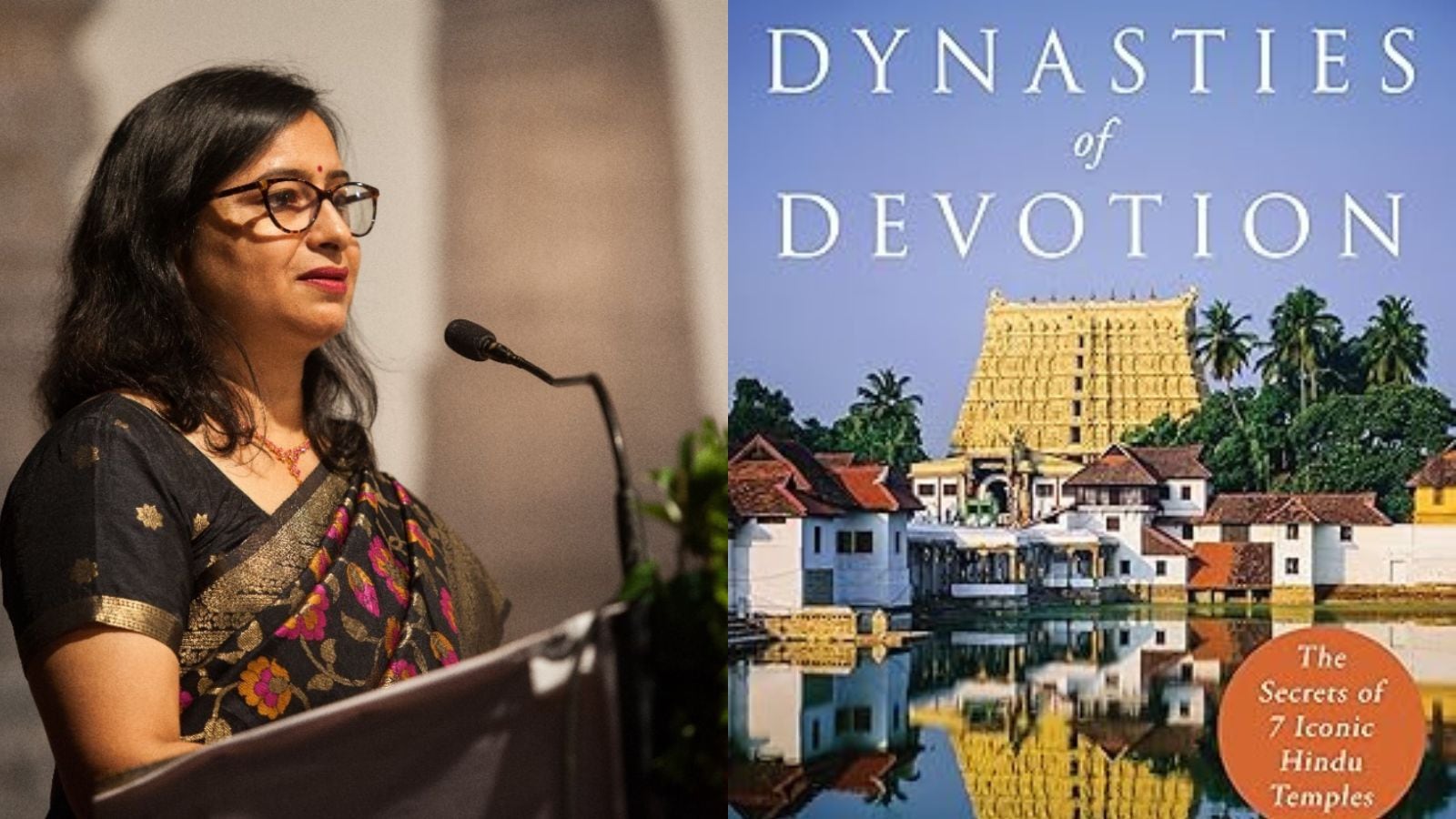When we visit a grand Hindu temple, most of us do the predictable: we marvel, we click pictures, we leave. But author Deepa Mandlik’s book, Dynasties of Devotion, urges us to pause, dig deeper and listen to the whispers of stone, chisel, and myth. Because behind every towering gopuram and intricate carving lies a saga of devotion, not just to the divine, but to the art, architecture, and empire.
In this beautifully written travel-history hybrid book, Deepa Mandlik retraces her family’s footsteps through seven iconic temples — Ellora’s Kailasa temple, Thanjavur’s Brihadeeswara, Airavatesvara, Chennakeshava, Padmanabhaswamy, and Cambodia’s Angkor Wat and Bayon.
Mandlik’s book takes us through lessons that integrate history and architecture, but more than that, weaves heart into stone, tracing dynasties, decoding sculptures, and listening for forgotten whispers beneath temple spires. The book is not a dry archaeological log. It’s a storytelling feast, rich in legend, behind-the-scenes stories and civilisational exchange.
When you walk through the ancient corridors of Hindu temples in Cambodia or south India, the intricate carvings of deities, the echo of chants long silenced, and the sheer audacity of stone carvings make you wonder: how did Hinduism travel this far? What winds carried these gods across oceans and dynasties?
Most temples are known for their presiding deity, but the author refreshingly turns the spotlight on the remarkable rulers who shaped them — the Cholas, Hoysalas, Cheras, Rashtrakutas, and Khmers. Their architectural visions were not mere constructions but cosmic declarations, each temple a testament to power, piety, and profound cultural exchange.
I particularly enjoyed the chapter on the Brihadeeswara temple. Mandlik takes you to the court of Rajaraja Chola, where a group of sea-faring traders return from Cambodia after a profitable trip. The merchants complain about being robbed by the navy of the Cheras of Kerala and presented the king with a golden miniature replica of a Hindu temple built in Cambodia and sang its praises.
Rajaraja had been thinking of making a grand temple, and seeing the miniature stirs something deep inside him. He had dreams of building a magnificent temple and, thus, begins the saga of Brihadeeswara — a temple that would take years, weather palace and family intrigues and eventually stand as a monumental embodiment of that vision and sacred grandeur.
Everyone talks about its towering vimana and grandeur. But, Mandlik also delightfully explains the dancing sculptures of Hindu deities, Shiva and Parvati, and explores how this Chola dynasty temple was once a prestigious stage for Bharatanatyam with nearly 400 dancers and 250 musicians in residence. The temple wasn’t just sacred, it was sensory.
This blending of fact and folklore is her magic. You don’t just learn, you imagine. The book is peppered with fascinating stories and she tackles popular myths with gentle clarity. One enduring legend is that the Brihadeeswara temple is so huge that its shadow never touches the ground.
While this is not true, the origin of the myth is even more delightful. Mandlik narrates the story of how when the temple was completed, Rajaraja was inspecting it accompanied by the chief architect. He was quite impressed since it was exactly how he had envisioned it. However, looking at the stupendous temple, he asked his chief architect: ‘Will this temple ever fall?’ To which, the architect quipped: ‘Forget the temple, even its shadow won’t fall on the ground.’
This conversation between the king and his architect became a legend that has endured. Sometimes, legends endure because we need them to. In later chapters, Mandlik travels to Angkor Wat, where the visual poetry of the Mahabharata and Ramayana is carved into stone. But she doesn’t stop there, she also explores the Buddhist Bayon temple, which is not Hindu but is still included in her list for its symbolic connection to Mount Meru.
The Bayon was at one time also converted into a Hindu temple. Its carvings still reflect the shared motifs and deities of Hindu cosmology. On a side note, ‘meru’ in Sanskrit means “high” and the “Sumeru Throne” is a common feature in Chinese pagodas.
Mahameru, the sacred five-peaked mountain, is central to Hindu, Jain, and Buddhist cosmologies, and is imagined as the axis of the universe — the abode of Brahma and the celestial realm. While modern academics often dissect Hinduism and Buddhism with surgical precision, I applauded Mandlik’s inclusion of Bayon because it reminds us that the origins of both practices were, for centuries, entwined, and still are.
Coming back to the book, it has been written with affection not abstraction. It preserves the bhaav, the emotion of faith, while offering rich historical and architectural context and massive amounts of data. The anecdotes are compelling, the research strong, and the writing warm and accessible. The book is interspersed with full-page photographs and you feel like you are standing in the mandapas, touching the cool stone hearing the distant rhythm of temple drums.
If you ever plan to visit these temples, carry this book along. It is better than any guidebook. Even if you’re not planning a trip anytime soon, read it anyway. Because this is time travel. This is devotion, dynasty, and drama, and I wish history was taught like this in school. When you finish the book, I guarantee goosebumps and a warm feeling at the sheer magnificence of the architecture and the wonder that was Bharat.
(The writer is a lawyer, author and founder of YogaSmith, whose next book, ‘Dharma Ecology of Bishnoi Warriors’, will be out in July. Views expressed in the above piece are personal and solely those of the authors. They do not necessarily reflect News18’s views)
